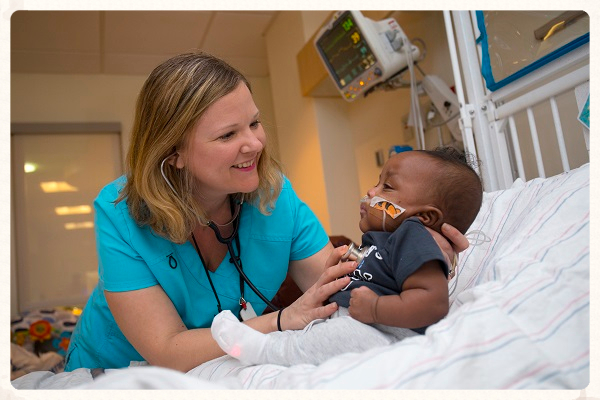Children need optimal nutrition for healthy growth and development. However, a large number of medically fragile children experience swallowing and feeding disorders that negatively impact their growth and overall health.
At Children’s Specialized Hospital we have great expertise in treating children with medical, behavioral, and sensory based feeding needs. Our multidisciplinary team works closely with patients and families to achieve optimal outcomes, with an ultimate goal of supporting nutrition and overall health.
When a child cannot meet nutritional needs by mouth, a first line of treatment is often a nasogastric, or NG-tube. If a child does not gain adequate weight over a four- to six-week period, a gastrostomy, or G-tube may be indicated.
 Indications for G-tube feeding in pediatric patients include:
Indications for G-tube feeding in pediatric patients include:
- Failure to thrive due to prematurity or other medical diagnoses and disorders, including cystic fibrosis, autism, developmental delays, traumatic brain injury, cardiac or respiratory conditions, severe food allergies
- Congenital abnormalities of the face, mouth and digestive tract
- Swallowing disorders
- Inability to swallow or cough to clear the airway
Many parents and even some health professionals react negatively to the recommendation of a G-tube, seeing it as a sign of failure. Our message to families is that a G-tube is a positive, not a negative, helping a child with health challenges receive adequate nourishment. This in turn promotes brain growth and builds strength and endurance, enabling that child to be prepared to participate more fully in activities of daily life.
An important role of our care team is to provide education about G-tube feeding. Research on the G-tube’s benefits found significant improvements in weight gain and overall health, as well as reduced stress on the part of caregivers (no more force feeding or worry that their child is struggling to grow and gain weight). A common misconception is that a child with a G-tube cannot eat or drink by mouth. The G-tube does not interfere with eating or drinking but provides a safety net, supplementing nutrition for children who can’t eat everything they need to gain weight. Many children who transition from an NG-tube to a G-tube begin to eat regularly by mouth because they are more comfortable without obstruction to the face, mouth, and throat.
Maintaining good nutrition and hydration is a team effort, and that team includes speech language pathologists, physicians, physical and occupational therapists, nutritionists, and a psychologist. Speech therapists help with oral motor skills, diet progression, chewing and safe swallowing, while occupational therapy addresses sensory feeding issues and self-feeding. The psychologist is a critically important member of the team, helping children with behavioral issues, providing guidance to families, and supporting the work of the therapists.
Much of this therapy is ‘show and tell’—we initiate a strategy to see how the child responds, and when it is positive, we train the parents to go home and practice. It’s very important for parents to be able to duplicate these strategies. On our end, we provide support and advancement of skills until a child is safe and successful at home.
As a child becomes more proficient in oral feeding, the pediatrician or gastroenterologist determines how much the child is eating by mouth vs. the G-tube. When a child is consistently meeting calorie needs by mouth, is gaining weight, and has not needed G tube feeding for three to six months, the medical team will consider removing the G tube.
We care for children from birth to age 21, with services provided at several locations in New Jersey. To learn more or schedule an evaluation, call 88-244-5373.